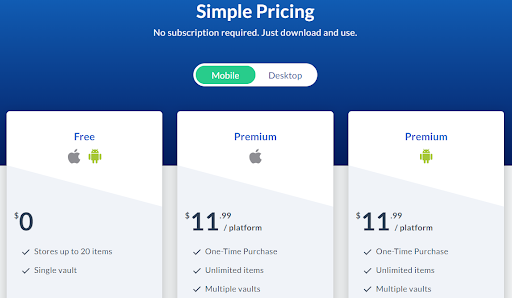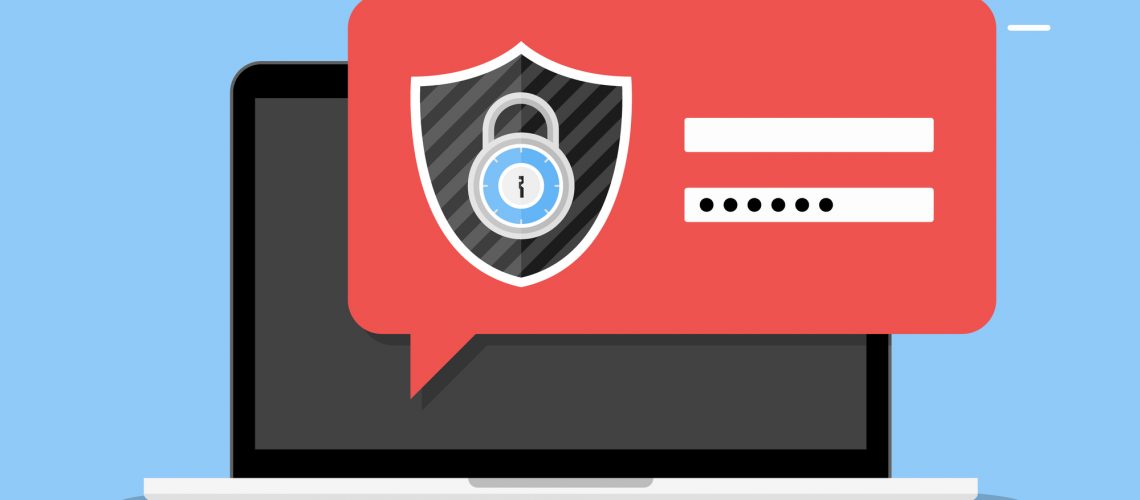Password Manager (Part 2) - HOW TO SETUP ENPASS TO MANAGE YOUR PASSWORDS
GOOD HABIT: Protect yourself on the web and access your strong passwords from anywhere
Continuing off of Password Manager (Part 1) – Why you HAVE TO use one!!!, here’s a step by step tutorial on how to download and setup Enpass
Before we begin, I recommend having an online storage account so you can save your Enpass database file to the cloud.
If you need help, read Setting up a Microsoft Outlook.com Account
Overview
1. Download & Setup Enpass (Desktop)
- a. Create your master password (the only password you’ll have to remember)
- b. Save your database file to cloud storage
- c. Create a password entry
2. Download & Setup (Smartphone)
- Connect to your Enpass database file stored in the cloud
Let’s Get Started!
Step#1 – Download & Setup Enpass (Desktop)
1. Download Enpass desktop from (https://www.enpass.io/downloads/)
Note: For this example, I will perform the “Windows 10” install from the Windows Store
- a. Windows 10 – Choose this option

- b. Windows 7 or 8 – Choose this option

2. Install Enpass from the Windows Store by clicking the “Get” button

3. Once installed, click the Start Button at the bottom left hand corner of your screen
4. Type Enpass
5. Click the Enpass Password Manager to launch Enpass

6. Click I am a new user (If this is your first time)
- a. If you already have an Enpass database file, select the cloud storage where you previously saved it
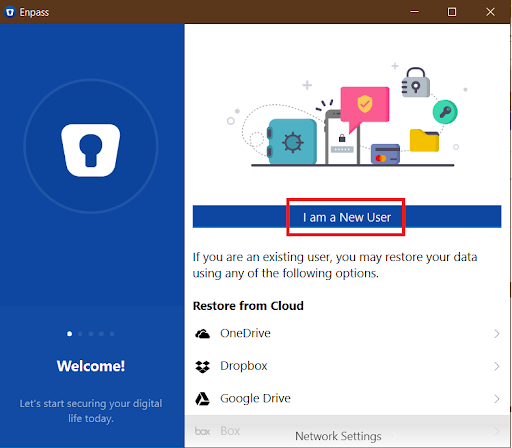
7. Enter a Master Password
- a. REMEMBER THIS PASSWORD!!!
- b. If you forget it, Enpass cannot help you recover it.
- c. They DO NOT store your master password for your own security
8. Quick Setup Features
- a. Turn on Auto-run by clicking the slider so Enpass starts automatically with your computer
- b. Enable Sample Items by clicking the slider
- i. This is optional incase you want Enpass to create some samples for you
- ii. I recommend adding them to give you an easy start. You can always edit or delete them
- c. Browser add-ins will be discussed later in this post
9. Click the check mark located at the top right to save your changes
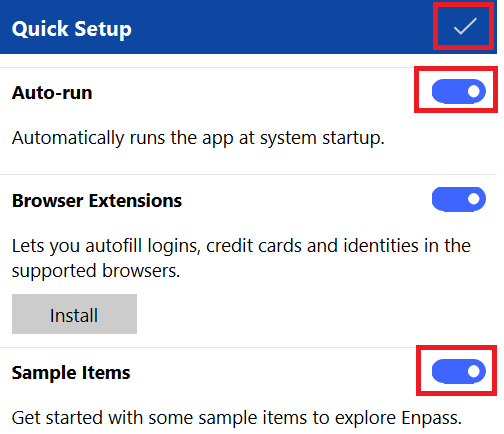
10. You have successfully setup an Enpass Vault which should look like this (w/ sample items enabled)

REMINDER: This is a free trial version that allows you to create up to 20 password items
Step#2 – Sync your Enpass Vault database file to cloud storage
IMPORTANT: Storing your Enpass database file in cloud storage such as Microsoft OneDrive has 2 BIG BENEFITS
Benefit #1
- A centrally stored password file on the internet allows you to access it from ALL of your devices (phone, laptop, etc.) and also syncs back and forth between them so you’re ALWAYS up to date
Benefit #2
- Having it stored in the cloud eliminates the issue of you losing all of your information if it were stored locally on your phone or laptop
- If your phone is lost or laptop dies your data would be lost in this scenario
In this example, I will store the password vault file in Microsoft OneDrive, but you can use other cloud storage like Dropbox, Google Drive, etc.
1. Click the Red Cloud icon in the top left corner of the Enpass app

2. Click Set up Sync to move your database file to a cloud storage (in this example, OneDrive)
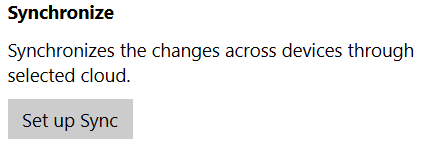
3. Select OneDrive

4. You may be prompted with the following message
- a. If so, click Yes

5. Logging into Microsoft OneDrive
- a. If you were already logged in (which is common if you’re working on a Windows device), you WON’T be prompted for your OneDrive login info
- b. If you are NOT already logged into OneDrive, you will be prompted to sign into your account
- i. Enter your email address
- ii. Enter your password
- iii. Click Next

6. POSSIBLE – You may be prompted with the following Authorization Finished! message

7. POSSIBLE – You may also be presented with the below drop down from your browser
- a. If so, tick the check box and click Open Enpass Password Manager button
- b. If Enpass doesn’t come to the forefront of your screen, click it in your taskbar at the bottom of your screen

8. POSSIBLE – If you are prompted with the following. Click Yes
- a. This allows your Enpass app to login to OneDrive in order to access and update the file you just moved to the cloud
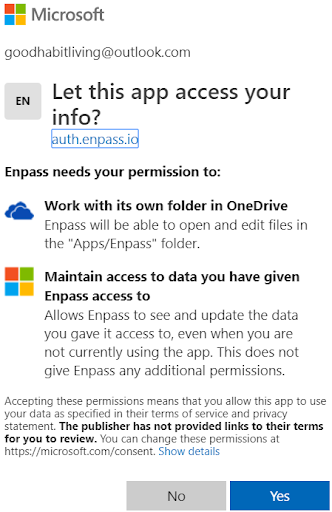
- a. Your Enpass password database file will be moved to your Microsoft OneDrive cloud storage in the following location:
- i. OneDrive\Enpass

- b. The cloud icon at the top left of the Enpass app will turn from Red to White
- i. Indicating that synchronization is setup successfully

- c. After clicking on the White Cloud icon, you will see that the password vault is now synchronizing with and stored in OneDrive

You are now ready to use Enpass to create and save your account passwords such as bank accounts, social media, and shopping sites.
Bonus Info
Step #3 – Installing Enpass Browser Extensions
What is the Enpass browser extension?
Here is Enpass’ definition straight from their site
“Enpass Browser extensions work in conjunction with the desktop application for auto filling usernames, passwords, credit cards, and identities on the web pages. It also lets you generate strong & unique passwords, saves new logins to avoid the copy/paste details between the main app and browser, and a lot more.”
Enpass has extensions for the following browsers. I recommend installing them on all of the browsers you use for added convenience
- Firefox
- Chrome
- Safari
- Microsoft Edge
- Opera
- Vivaldi
Note: unfortunately, there isn’t an extension for Microsoft Explorer (due to technical reasons explained on their site)
Here I will cover how to install for both Chrome and Microsoft Edge
1. Go to https://www.enpass.io/downloads/
- a. For the Chrome extension, open this link Chrome
- b. For the Edge extension, open this link in Edge
2. Click the Extensions button

Browser Extension for Chrome
1. Scroll through the list and click Get it next to Extension for Chrome

2. You will be taken to the Chrome add-in page
3. Click Add to Chrome and follow the prompts

Browser Extension for Microsoft Edge
1. Scroll through the list and click Get it next to Extension for Edge

2. You will be taken a Microsoft site
3. Click the Get it button and you will be redirected to the Microsoft Store app on your Windows Desktop
4. Click Get again to install from the Microsoft Store


6. Click Turn it on
One Last Security Step
7. Open your browser
8. You will now have a small Enpass icon near your browser’s favorites bar at the top right (images for Chrome and Edge)
Edge
Chrome
9. Click the icon and you will be prompted to enter an authentication passcode
- a. Enter the authentication code that appears on the left into the boxes on the right
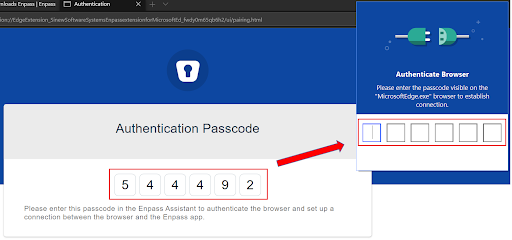
Step #4 - Once installed, how to use it!
10. When you click on the Enpass icon in the toolbar you will have direct access to your passwords
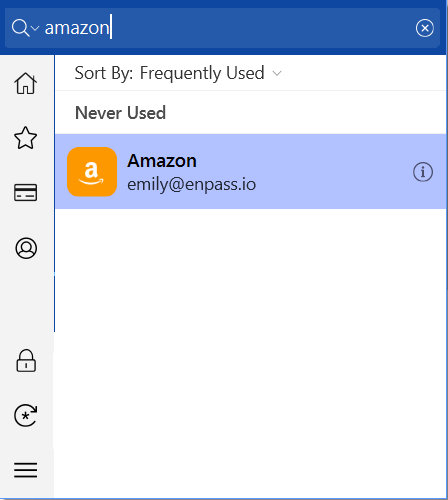
11. To enter usernames and passwords into website, you have 2 options
- a. Option #1:
- a. Search for the site you want in the Enpass Extension (such as Amazon)
- b. Click on it and it will take you to the site AND enter your credentials
- b. Option #2
- a. Go directly to the website login (such as Amazon)
- b. Click the Enpass extension icon
- c. Enpass find the password card in your vault
- d. Click on it to enter your credentials
Step #5 – Installing Enpass on a mobile device or tablet
Let’s be honest, this is were you want to access your passwords since most of us use our phones for web browsing more than desktops these days.
To download and install Enpass on your phone/tablet, do the following
- From your device (iOS or Android) go to the relative store
- Search for Enpass
- Select the app for install
- You will automatically install the trial version with allows for 20 password items sync
PRO TIP!
Turn on Dark Mode!
For the Windows Desktop version you can turn on Dark Mode with the following steps
- 1. Click the settings icon at the top right corner of Enpass
- 2. Check the Use Dark Theme box

Upgrading to Premium
What if I need more than the 20 password items that come with the free trial?
If this happens, you’ll need to purchase the full application for your phone or tablet.
Check out pricing here https://www.enpass.io/pricing/
The GOOD NEWS is that the Windows desktop app is still FREE!
I do own the Premium Desktop version myself since I use Enpass heavily and wanted all of the features. If you’re cost conscious though (like I am) you can get by without upgrading.
